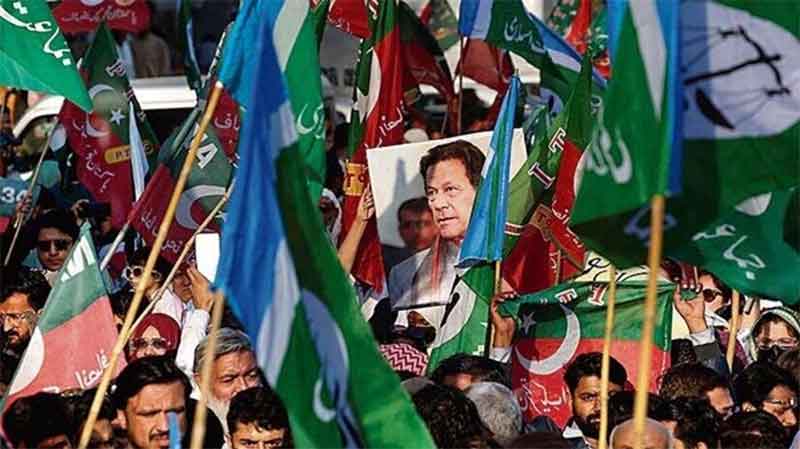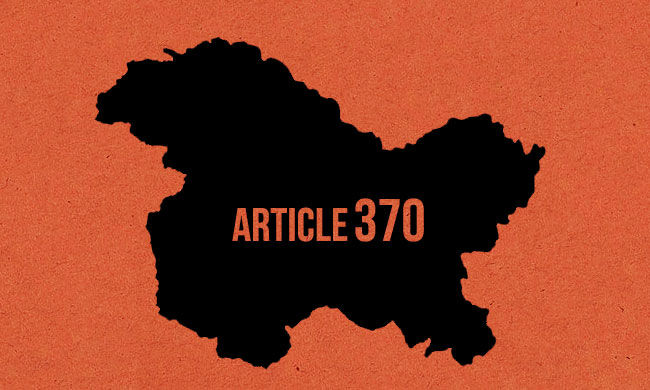
In its recent order Indian Union cabinet declared five languages as official languages in the Union Territory of Jammu and Kashmir. The President of India, subsequently, put his seal of approval. These include English, Hindi, Urdu, Kashmiri and Dogri. Urdu was originally the prime official language in the erstwhile state of J&K. As such, the new order implies Urdu has lost its exclusive status as the official language in the year old Union Territory.
Urdu and Kashmiri are written in the Persian –Arabic script while Hindi and Dogri have Devnagri script. Eminent columnist Z G Muhammad feared long back that Urdu may have to see very bad times in future .In a long write up published under the title “Can Urdu go away from Jammu and Kashmir (Kashmir Times 28/7/1997) he wrote , “Urdu may have become irrelevant for Muslims in India but in J&K it is as relevant today as it was hundred and fifty years back and in fact its survival as third language is necessity for the unity of the state .” He continues to say ,”Urdu was given official status in 1885 by Maharaja Pratap Singh, the then ruler of J&K .And after that it continued to be the official language of the state . In 1956 the Jammu and Kashmir constituent assembly adopted article 145 ,extending official status to this language in J&K .”
Rajan Gandhi in one of his write ups traces the historical background of Urdu language as follows, “ Dogra rulers recognized Urdu as a state and official language of J&K. Before Urdu, Persian was the official language of Kashmir for around three centuries. It was the British residency in Kashmir from 1885 that finally pushed the Dogra Maharaja towards the acceptance of Urdu as the official language in 1889. From 1885-1925 Urdu remained the communication link between the Dogra rulers and the British. Earlier Dogra rulers- Maharaja Gulab Singh and Maharaja Ranbir Singh tried hard to introduce Dogri as the official language of the State but faced stiff resistance from various quarters and some practical problems too like Dogri did not have a well-developed script and literature to get success as an official language.”
Urdu, as a language was introduced into the minds of common people by the turn of events and not through any encouragement from the ruling class. The famous writer Arundhati Roy in her recently published book ‘Azaadi’ puts her view point in tracing the birth of Urdu. She writes, “ The Language known variously as Urdu/Hindi/Hindustani ,and in an earlier era Hindvi, was born on the streets and in the bazaars of North India ……..Persian lexicon came to be added .Urdu written in the Persian Arabic script was spoken by Hindus and Muslims across north India and the Deccan plateau . It was not , as is often made out to be , the high language of the court .That in those days was the Persian .”
Z G Muhammad ,the eminent columnist adds in his column published in Nation Pakistan on 23rd June 1988 ,” Evolution of Urdu language has been like any other language of India. It emerged in a similar fashion as any other Indic language, out of synthesis of various cultures and languages. And wherever this language travelled it accepted local influences.”
Decline of Urdu as its use has many facets .One of them is illustrated by Rajan Gandhi as he explains , “The entry of All India Services in J&K in 1962 led to a decline in the use of this official language in the higher echelons of power because the officers – majority of them non-locals – didn’t know Urdu and preferred English. Urdu, however, continued to be the main language of the government keeping in view of sentiments of Kashmiris. In J&K, Urdu is the language of land and revenue records, courts (especially lower judiciary) and police (FIRs etc are all written in Urdu)”
Views expressed by Mr.Gandhi may be limited to Jammu and Kashmir but on all India level the issues are bigger. Z G Muhammad in his column has a wider view .In his article (Can Urdu go from Jammu and Kashmir ;Kashmir Times 28/7/1997) he expressed his view in the context of India getting moved towards a dangerous right wing lap. As early as twenty three years back he has a political prophecy , “The whole texture of India society is hammering itself to a new shape. It is not just the twin forces of acceleration and transience that are propelling it towards a change. The ever growing religious fanaticism amongst the elite, especially the bureaucracy and intellectuals, is going to play a more pivotal role in the coming years. Hindu Chauvinism will have an upper hand……….apart from Hindu Chauvinism ,there are some inherent dangers for the survival of this language .It is no more the bread earning language while as Hindi , its sister language, is now the main bread earning language. ……..but it will have the potential of exploitation by politicians to garner support of the Muslim electorate.”
Almost similar views are expressed by Arundhati Roy in her book ‘Azadi’. She delves deeper to record, “…….messy partitioning of the language we knew as Hindustani into two separate languages with two separate scripts ———now sadly and arbitrarily (in which ,erroneously ,Hindi is associated with Hindus and Urdu with Muslims).
Young columnist Sahil Lone is astonished by the turn of events in recent months as he points out in one of his columns , “ Not long ago, a leader from ruling party tweeted a picture showing the name “Dehradun” written in Sanskrit along with Hindi and English, and replacing Urdu on a railway station signboard in Dehradun city. When this news was circulated on social media platforms, I was astonished to see that many people were labeling Urdu as a Pakistani language. Some went a step ahead and called Urdu speakers “terrorists”.”
Arundhati Roy has a word of caution as well as a reference to historical events as she refers in following words, “ Hindi written in Devnagri script ; any serious move towards making it national language has been met with riots in non –Hindi regions of the country.
…..but when the Islamic republic of Pakistan tried to impose Urdu on its Bengali speaking citizens it ended up losing half of itself. “ Ms.Roy quotes another example when Sinhalese was tried to be imposed on Tamils in Sri Lanka it got engulfed in long drawn civil war.
The labeling of Urdu as “Muslim language” has had dangerous ramifications and could spell uneasy calm for the whole society. In March 2017 two Muslim members of the legislative assembly of Uttar Pradesh were prevented from taking their oath of office in Urdu. A member of Aligarh municipal corporation was charged with “intent to hurt religious sentiments for trying to do the same.”
The infamous incident of famous Urdu poet Wali Dakhni,s mausoleum been razed and a tarred road built during 2002 Gujarat riots is a blot on the secular credentials and speaks volumes about hate towards Urdu and its scholars of repute.
Jammu and Kashmir is the only Indian state with a Muslim majority population. According to the 2011 census, Islam is practiced by about 68.3% of the state population, while 28.4% follow Hinduism and small minorities follow Sikhism (1.9%), Buddhism (0.9%) and Christianity (0.3%). These figures raise a pertinent question if Urdu is associated with Muslims only how could 68 percent population be deprived of this . Additionally , it is estimated that 4.4 million people in Kashmir speak Kashmiri language which again is written in Persian-Arabic script. There are millions of pages written in this script viz literature, history, culture and so on. Despite this a small group consisting of Kashmiri Pandits ,in connivance with some officials in Delhi , are trying to impose Sharda script. The conflict of languages continues.
(The writer is Kashmir based columnist and author of the novel “The Half Widow” and co-author “The Eternal Insight of Kashmir”. He can be mailed @ [email protected])
SIGN UP FOR COUNTERCURRENTS DAILY NEWSLETTER
















































